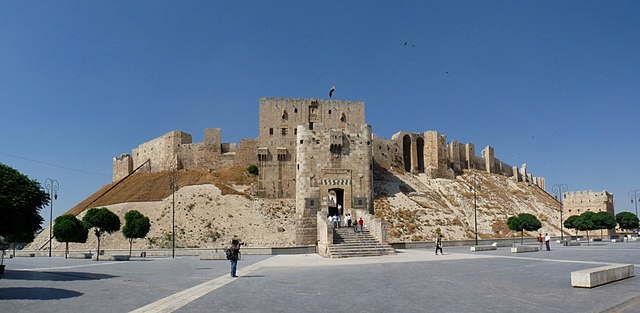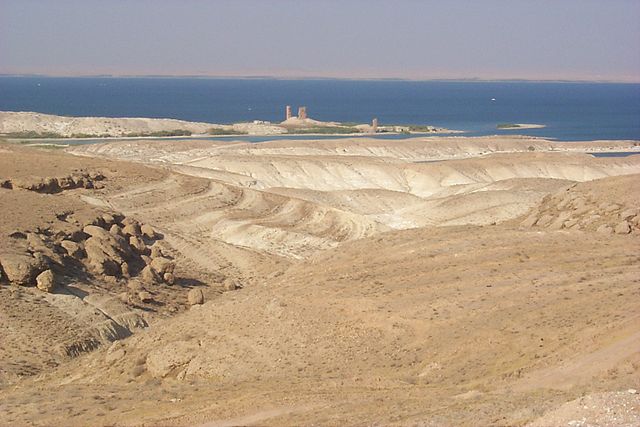Abu Nasr Fath al-Qal'i, also known by his laqab of Mubarak al-Dawla wa-Sa'id-ha, was the governor of the Citadel of Aleppo during the reign of Emir Mansur ibn Lu'lu'. In 1016, he rebelled against Mansur, in likely collusion with Salih ibn Mirdas, forcing Mansur to flee. After a few months, Fath relinquished control of Aleppo to the Fatimid Caliphate, marking the beginning of direct Fatimid rule over the city. Afterward, he held posts in Tyre, then Jerusalem. As governor of Jerusalem, Fath helped the Fatimid general Anushtakin al-Dizbari suppress a rebellion by the Jarrahids in 1024–1025 and maintained order between the Rabbinate and Karaite Jewish sects during the Hoshana Rabbah festivals at the Mount of Olives in 1029 and 1030.
The Citadel of Aleppo in 2010. Fath was the governor of the citadel under Mansur ibn Lu'lu' and derived his surname al-Qal'i (of the Citadel) from this position.
Abu Ali Salih ibn Mirdas, also known by his laqab Asad al-Dawla, was the founder of the Mirdasid dynasty and emir of Aleppo from 1025 until his death in May 1029. At its peak, his emirate (principality) encompassed much of the western Jazira, northern Syria and several central Syrian towns. With occasional interruption, Salih's descendants ruled Aleppo for the next five decades.
Gold dinar minted in Aleppo in the name of Salih ibn Mirdas and recognizing the suzerainty of Fatimid caliph az-Zahir, 1028/29 CE
Salih was first mentioned in the historical record when he captured the fortress of al-Rahba (pictured in 2005) in 1008. The fortress as depicted in the photograph dates to the 12th century.
Ruins of Balis (pictured in 2005) on the Euphrates River. Between 1009 and 1022, Salih laid the foundations of his emirate by capturing a string of fortress towns along the Euphrates, including Balis, Manbij, al-Rahba, Raqqa and al-Rafiqah
General view of old Aleppo (foreground) and its citadel (background), 2008. Aleppo was the capital of Salih's Mirdasid emirate. The citadel as depicted in the photograph dates to the 12th century.





